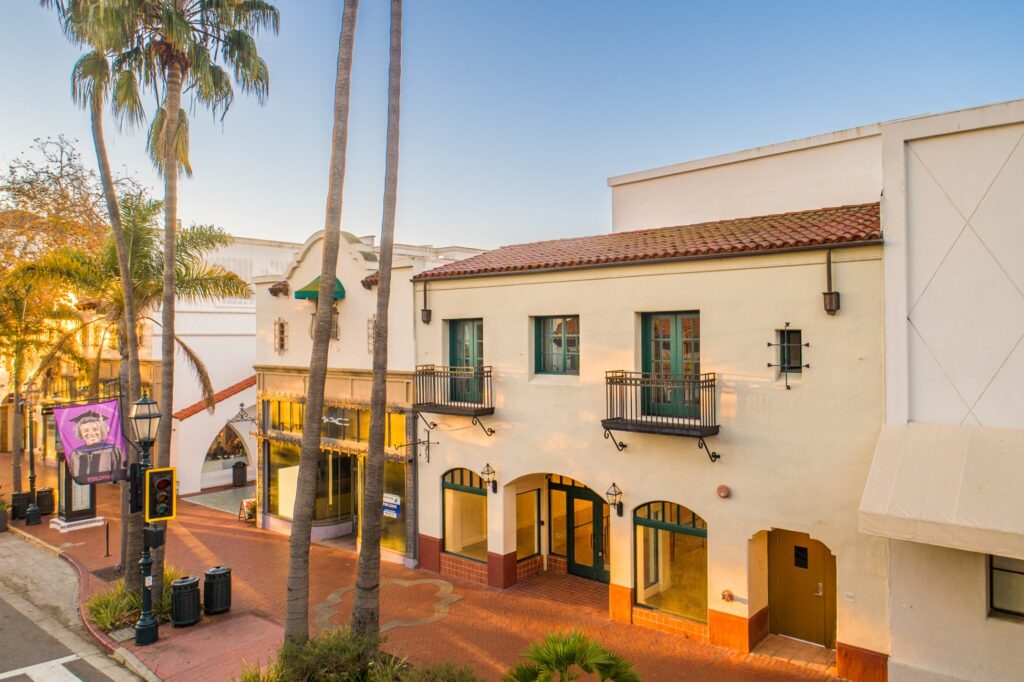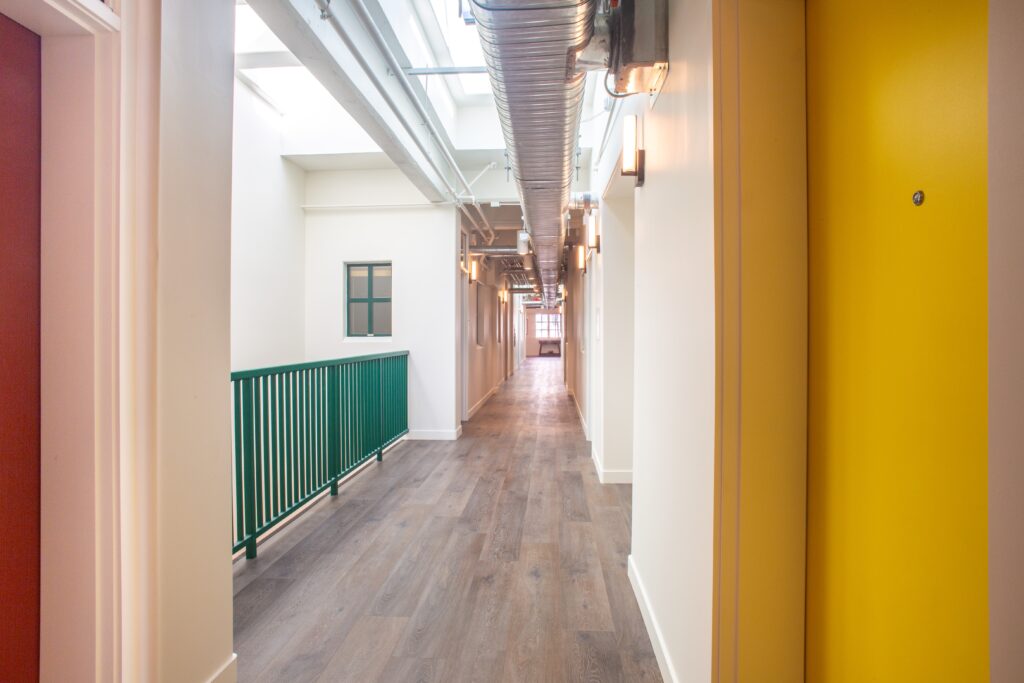Adaptive Reuse Turns Empty Storefronts into Affordable Housing
California’s Workforce Housing Solution

By Mark Fogarty
6 min read
The California city of Santa Barbara is an affluent place. Oprah Winfrey lives there. President Reagan had his ranch there. But its commercial district was starting to look ragged post-pandemic, with stores going out of business due to online competition from Amazon and others. So, the city and its housing authority had an idea they think is replicable for cities around the country facing similar problems: adaptive reuse of shuttered storefronts into housing.

The Studios, which replaces the vacant Sur La Table upscale fixtures emporium, has filled one empty hole in the city’s State Street business district with 14 studio apartments. Two will be for affordable housing, one for moderate-income and the rest will have no income restrictions but have been priced about 25 percent lower than similar units in the beachfront city north of Los Angeles.
“We’ve had a decline in our central business district with the advent of Amazon and online ordering,” says Rob Fredericks, chief executive officer and executive director of the Housing Authority of the City of Santa Barbara (HACSB). “Small shops have gone out of business, and it leads to the decay of what was once a vibrant downtown. An adaptive reuse like this project is much needed. (See HACSB’s five core values sidebar.)
Rents for these studio apartments are $965 a month for the low-income housing, and $1,600 to $1,850 for the rest. Market-rate rents on studios in Santa Barbara can go as high as $3,000 a month.
“That’s unattainable for most people,” according to Fredericks. Residents showed high demand for the studios, which range from 290 to 500 square feet, with 75 applications received for the 14 units in three days, and a total of 200 applications overall. Four units are on the ground floor and ten are on the second floor.
It’s a drop in the bucket though, according to Fredericks.
HACSB has a waiting list of 7,000 households, he says, while it serves 1,462 units of affordable housing and another 3,000 with housing vouchers.
The affordable housing crunch is such that people in this affluent city double and triple up, live in their cars or go homeless, he says.
This adaptive reuse “is very unusual,” and an idea that may have legs. Another vacant commercial property in the city is being turned into a hotel, Fredericks says. Adaptive reuse like this “is much needed to reverse the decline of a once-vibrant downtown.” 821 State Street stood vacant for several years before the adaptive reuse began.

No Low Income Housing Tax Credits were used for this project, Fredericks says, with financing coming strictly from a permanent loan. However, for developers serving 60 percent of the area median income and below, LIHTCs are a viable option, especially if more units are included, Fredericks adds. Total development costs were $3.5 million. The housing authority is the developer and operator of the property.
“We’re not looking for a return on investment,” Fredericks says. “We want to break even and have a reasonable amount in reserve.”
The cost of financing benefited greatly from the donation of the property from Santa Barbara resident Jason Yardi, director of the Yardi Foundation. This permitted 821 State Street, which is at 821 State Street in the city, to be without subsidies except for housing vouchers for the two low-income tenants.
“When you have people living downtown, it breathes life back into the area,” says Fredericks. “It’s a great model. They can use State Street, which is the main street downtown, as their living room.
“We hope this will be a model to show other property owners in the district that they too can do this.” He says owners with large vacant properties can reduce their commercial footprint to a small space on the ground floor and use the rest for housing.
“That’s a great dual use of the property,” he says.
The vibe is workforce housing, so those who work in the service industries, restaurants, shops or offices can live and work in the city with access to the downtown area and the ability to navigate without a car.
That’s a Lot of Cars
Santa Barbara has a daily influx of 30,000 people into the city, and home again in the evening, making for bad traffic jams during rush hours, says Fredericks. He points out that difficulties in getting to work cause good workers to look for jobs elsewhere.
“The city was extremely helpful in the development passing through the entitlement process,” says Fredericks. “The city wanted to see this as a test case.”
The building is completely concrete, the director says, making for a challenge as no interior windows were possible. However, the design (done by architectural firm Cearnal Collective with the building by McGillivray Construction) placed balconies on the second-story units and had the doors facing an interior central corridor under a large skylight to promote natural lighting.
Fredericks says one space was left on the first floor for possible commercial, and the housing authority is negotiating to lease the commercial portion just to a clothing store for yoga and athletic needs, so the building now has dual use.
At the grand opening, Rep. Salud Carbajal was quoted by local media as saying that building affordable housing in the heart of downtown Santa Barbara was like “putting affordable workforce housing on Rodeo Drive, or Fifth Avenue in New York.
“It sets the tone, sets an example,” Carbajal said, “if you can have affordable workforce housing on State Street, you can do it anywhere.”
With the backing of the city, the site was built in ten months, according to a story on the opening.
A Circle of Virtue, Not of Doom
Fredericks calls the development “a circle of virtue,” meaning it keeps one commercial space open and adds affordable housing for potential residents. And that’s opposed to a circle of doom with transient commercial spaces and a lack of affordable housing.
“If we can create affordable places for people to live downtown and create spaces that are viable for small commercial operations it starts to solve both of those problems,” he says.
Although the units are small, there is a common area on the second floor, with great views of downtown Santa Barbara.
“The residents are happy there,” he concludes.
Advertisement
HACSB’s Five C’s
The Housing Authority of the City of Santa Barbara (HACSB) has five rules it lives by all beginning with the letter C:
1. Commitment
2. Compassion
3. Competency
4. Cooperation
5. Communication
While there isn’t space to include all the descriptions, the one for “competency” gives an idea of the philosophy at HACSB, which was established in 1968:
“We are knowledgeable and feel confident about the work that we do. We are creative and courageous, taking on new things and being self-motivated. Our positive and upbeat staff act honestly and morally—with integrity.”

